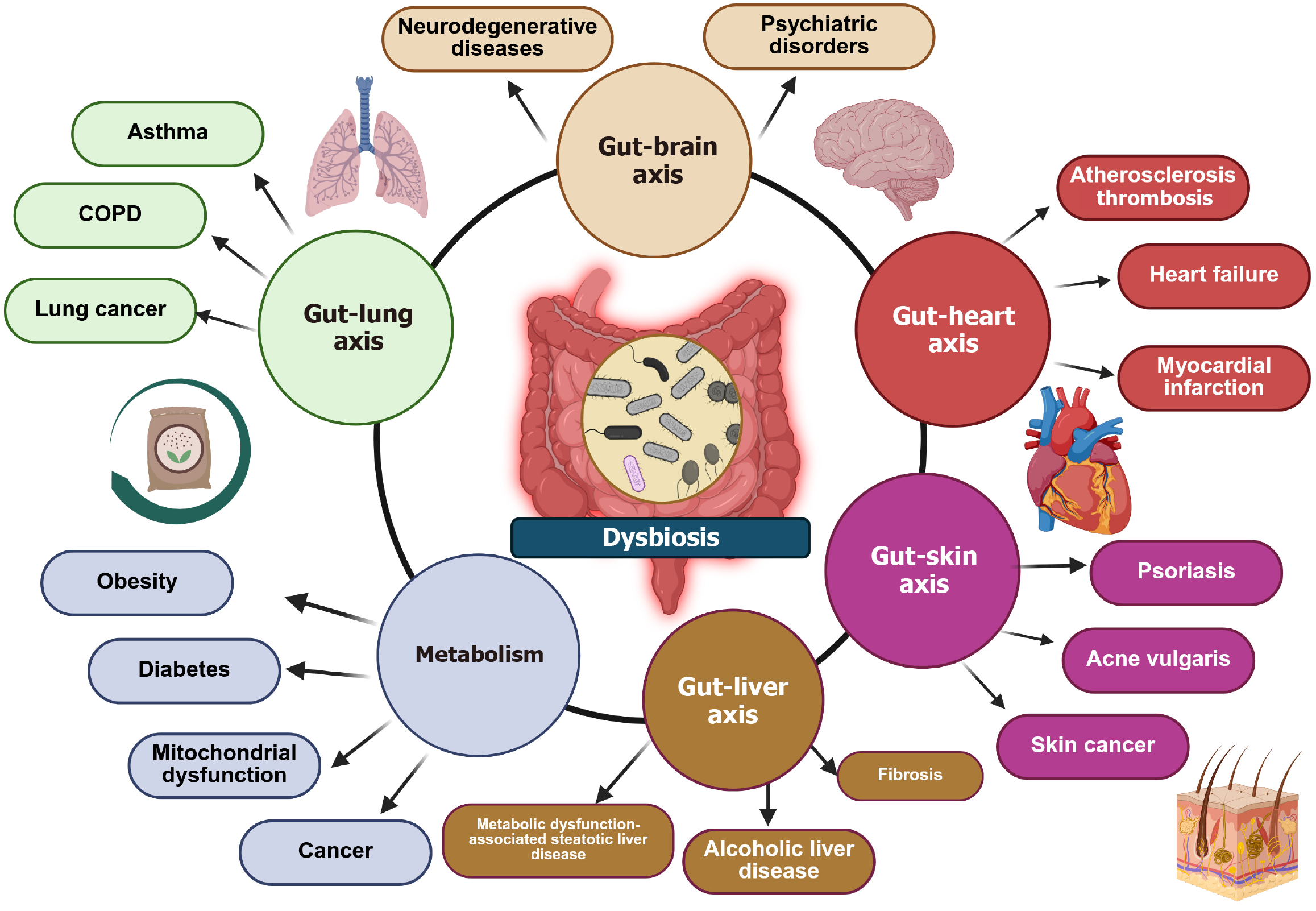Copyright
©The Author(s) 2025.
World J Gastroenterol. Jul 28, 2025; 31(28): 108297
Published online Jul 28, 2025. doi: 10.3748/wjg.v31.i28.108297
Published online Jul 28, 2025. doi: 10.3748/wjg.v31.i28.108297
Figure 4 Depiction of the effects of dysbiosis on the human body.
This diagram illustrates the interconnected relationship between gut microbiota and various organ systems through distinct gut-organ axes. Central to this interaction is dysbiosis, an imbalance in gut microbiota, which contributes to multiple diseases. It is evident that changes of the microbiota have a systemic impact beyond the digestive system, demonstrating its role in health and disease through multiple organ interactions. Microbial metabolites act as an inflammatory stimulus which elicits a generalized inflammation. Furthermore, these metabolites (lipopolysaccharides, fatty acids, bile acids etc.) have to be digested finally arrive to the liver. This elicits further inflammation via activation of Kupffer cells.
- Citation: Skok K, Vihar B, Maver U, Gradišnik L, Bräutigam K, Trapecar M, Skok P. Gastrointestinal tract, its pathophysiology and in-vitro models: A “quick” reference guide to translational studies. World J Gastroenterol 2025; 31(28): 108297
- URL: https://www.wjgnet.com/1007-9327/full/v31/i28/108297.htm
- DOI: https://dx.doi.org/10.3748/wjg.v31.i28.108297









